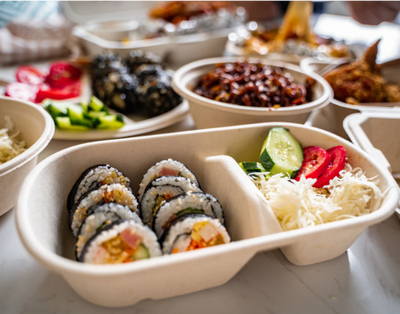The plate has become a new frontier in the fight against climate change. In recent years, what we eat—and how it’s produced—has come under greater scrutiny as people connect their food choices to global sustainability challenges. At the center of this conversation is the rise of plant-based menus.
Once dismissed as a niche dietary trend for vegans and vegetarians, plant-based eating has evolved into a mainstream movement. From Michelin-starred restaurants to fast-food chains, the food industry is embracing plant-forward dining as a way to reduce its carbon footprint, meet shifting consumer demand, and reimagine culinary possibilities.
This shift isn’t just about eating less meat—it’s about transforming the way we think about food, sustainability, and our future.
The Environmental Impact of Meat Production
Meat production, particularly beef and lamb, has one of the highest environmental costs of any food category.
-
Greenhouse Gas Emissions: Livestock farming accounts for about 14.5% of global greenhouse gas emissions, largely due to methane from cows and manure management.
-
Land Use: About 77% of global agricultural land is used for livestock grazing and growing animal feed, yet animal products provide less than 20% of the world’s calories.
-
Water Consumption: Producing just one pound of beef requires approximately 1,800 gallons of water—compared to around 200 gallons for a pound of lentils.
-
Deforestation: Vast areas of the Amazon and other forests are cleared for cattle ranching and feed crops, threatening biodiversity and carbon sinks.
The numbers make it clear: reducing reliance on meat, especially red meat, is one of the most effective ways to cut our environmental footprint.
The Benefits of Plant-Based
Shifting toward a plant-based diet offers powerful environmental benefits that extend beyond emissions reductions.
-
Lower Carbon Footprint: Studies show that individuals who follow a vegan diet can reduce their food-related carbon emissions by up to 73%.
-
Biodiversity Protection: By using less land and fewer resources, plant-based agriculture helps preserve habitats and protect endangered species.
-
Water Conservation: Plant-forward diets dramatically reduce water usage, helping to address one of the planet’s most pressing sustainability challenges.
-
Health Co-Benefits: Beyond sustainability, plant-based diets are linked to lower risks of heart disease, obesity, and diabetes.
Plant-based eating isn’t about restriction—it’s about abundance. Fruits, vegetables, grains, nuts, and legumes create an incredibly diverse palette of flavors, while helping reduce the strain on ecosystems.
Culinary Innovation
One of the biggest drivers of plant-based acceptance is culinary creativity. Chefs and food innovators are proving that plant-forward meals can be exciting, flavorful, and deeply satisfying.
From Salads to Sophistication
Gone are the days when plant-based menus meant a simple salad or steamed vegetables. Today’s menus feature:
-
Plant-based burgers made with pea protein or soy, rivaling beef in taste and texture.
-
Pulled “pork” jackfruit sandwiches, delivering rich, meaty flavor with a tropical fruit base.
-
Cashew and almond cheeses, providing creamy, dairy-free alternatives.
-
Mushroom “steaks” and seitan dishes, offering hearty textures for traditional comfort meals.
High-End Dining Meets Sustainability
Top chefs are elevating plant-based cuisine with fine dining flair. Creative plating, fermentation, and fusion flavors are turning vegetables into gourmet experiences. In some restaurants, entire tasting menus are dedicated to showcasing the artistry of plants.
This innovation is fueling broader acceptance. Diners are discovering that plant-based eating isn’t about sacrifice—it’s about discovery.
A Growing Market
The numbers tell the story: plant-based food is no longer a trend—it’s a booming market.
-
The global plant-based food market was valued at $44 billion in 2022 and is projected to surpass $160 billion by 2030.
-
Fast-food giants like McDonald’s, Burger King, and KFC have launched plant-based options to cater to growing demand.
-
In the U.S., nearly 50% of consumers report making an effort to eat more plant-based meals, even if they don’t identify as vegetarian or vegan.
Restaurants and cafés are adapting quickly. Many now feature “flexitarian” menus that include both meat and plant-based options, ensuring they appeal to diverse customers while lowering their overall environmental footprint.
This shift is also being driven by Gen Z and Millennials, who prioritize sustainability in their purchasing decisions. For food businesses, offering plant-based options is not just about ethics—it’s about staying competitive.
Making a Difference at Home
The rise of plant-based menus isn’t limited to restaurants. Each of us can play a role in sustainable eating at home.
Simple Ways to Get Started
-
Meatless Mondays: Commit to one meat-free day a week as a manageable entry point.
-
Experiment with Recipes: Try new plant-based dishes—curries, stir-fries, or pasta with lentil-based sauces.
-
Swap Ingredients: Replace ground beef with lentils, or dairy milk with oat or almond milk.
-
Support Sustainable Brands: Choose restaurants and food companies that prioritize eco-friendly sourcing and plant-based innovation.
Even small changes, when multiplied across millions of households, can have a profound global impact.

Conclusion
The rise of plant-based menus is more than a passing fad—it’s a fundamental shift in how we eat, cook, and think about food’s impact on the planet. With meat production driving deforestation, water waste, and greenhouse gas emissions, plant-based eating offers a practical, delicious, and scalable solution.
From chefs reimagining vegetables with artistry, to fast-food chains rolling out plant-based burgers, the movement is everywhere. Consumers are ready for it, businesses are embracing it, and the planet desperately needs it.
At home, the transition is simple: start small, stay curious, and make choices that align with your values. Supporting restaurants and brands that prioritize plant-based and sustainable options accelerates this global shift.
Because the future of food isn’t just about what’s on your plate—it’s about the kind of world we want to leave behind. And in 2025, one thing is clear: the rise of plant-based menus is here to stay.


